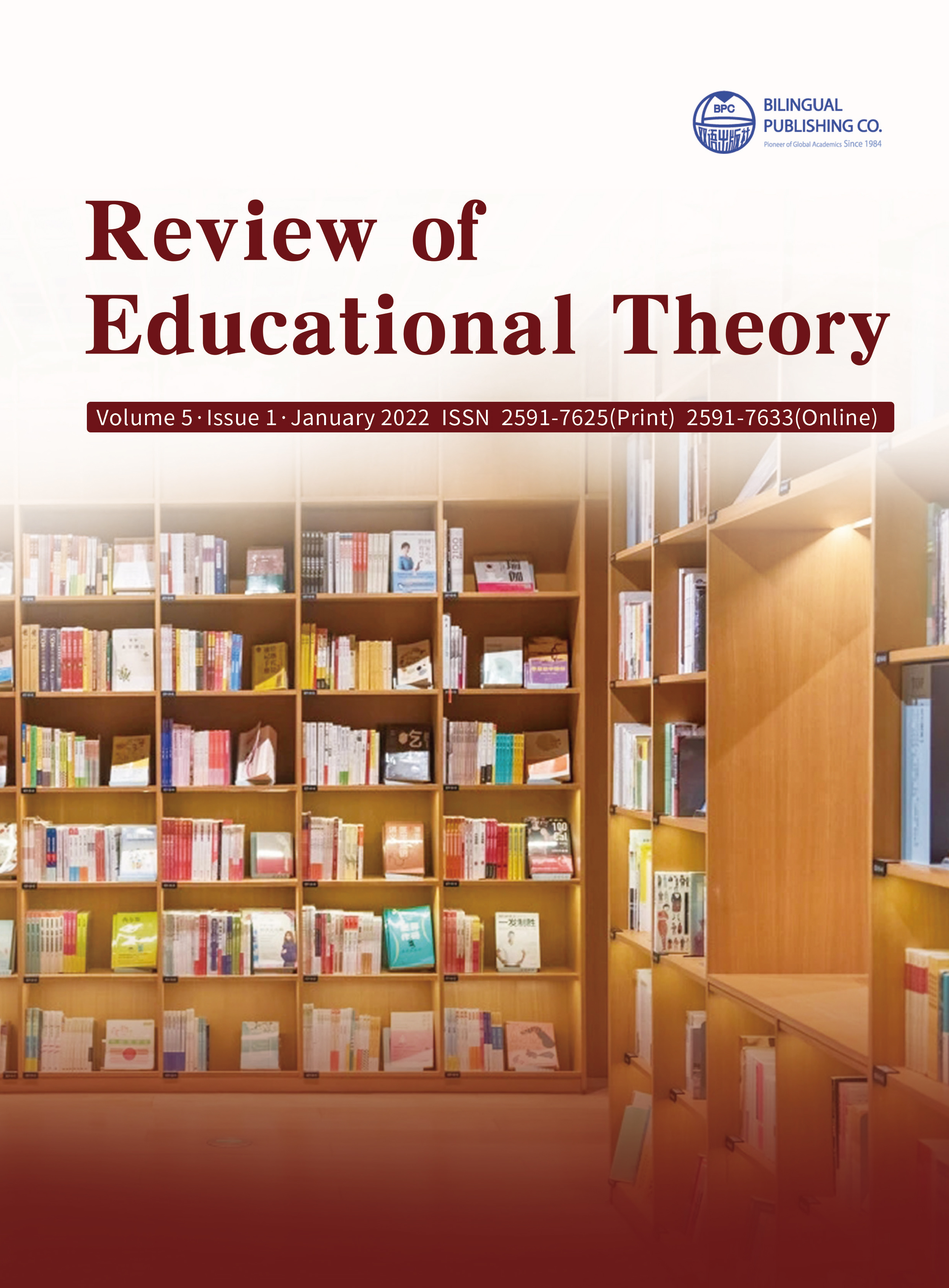The Evaluation of the Cultural Contents in the English Textbook for Non-English Major Students: A Case Study at Independent College in China
DOI:
https://doi.org/10.30564/ret.v5i1.4437Abstract
This study investigates the existing General English textbook focusing on the cultural contents to enhance the intercultural awareness cultivation of Non-English major students in China. The findings of this study can provide the valuable information of cultural contents adaptation in the textbook. It also can reveal teachers’ expectation and their awareness of teaching General English together with integrating cultural contents. Apart from the textbook analysis, 10 English teachers participated in the study. Data were collected using New Century College English Zooming In: An Integrated English Course, checklist, and in-depth interview. The findings from the checklist verified that the cultural contents of the existing textbook are insufficient. Moreover, the in-depth interview uncovered that though the cultural contents appear in the textbooks, however, they are somewhat minimal expressions that deficient to support the effective intercultural cultivating. Based on the results of the analysis and exploration, this study provides a guidance on the types of intercultural content to be adapted in this course. The findings of this study can be beneficial to the intercultural textbook adaptation for academic institutes and individuals interested in the field of English language teaching and learning.
Keywords:
Cultural content; Textbook evaluation; Non-English major students; ChinaReferences
[1] Jenkins, J., 2003. World English: A resource book for students routledge English language introductions. Psychology Press.
[2] Cortazzi, M., Jin, L., (Eds.), 1999. Cultural mirrors: materials and methods in the EFL classroom. Cambridge:Cambridge University Press.
[3] Kramsch, C., 1998. Language and culture. Oxford : Oxford University Press.
[4] Song, J., Bai, L., 2018. A study of Chinese culture aphasia in college English teaching in China. Language Teaching and Research. ISSN 1798-4769. 9(2), 309-315.
[5] Cunningworth, A., 1995. Choosing your coursebook. Oxford: Heinemann.
[6] Syrbe, M., 2018. Materials evaluation and design for language teaching. Applied Linguistics. 39(2), 247-249.
[7] Tomlinson, B., 2017. Materials Evaluation and Design for Language Teaching (second edition). English Language Teaching Journal. 71(4), 529-531.
[8] Steele, G.S., 2018. Materials evaluation and design for language teaching (second edition). RELC Journal.49(3), 402-404.
[9] Bergh, H., 2016. The difficulties of teaching intercultural competence in EFL classroom.
[10] Sun, W., 2013. How to cultivate intercultural communication competence of non-English major students. Theory and Practice in Language Studies. 3(12), 2245-2249.
[11] Saluveer, E., 2004. Teaching culture in English classes. (Master’s thesis, University of Tartu: Estonia).
[12] Halliday, A., 1999. Small cultures. Journal of Applied linguistics. 20, 237-264.
[13] Xiao, J., 2010. Cultural contents of an in-use EFL textbook and English major students’ attitudes and perceptions towards culture learning at Jiangxi University of science and technology, China. (Unpublished Master’s thesis, Prince of Songkla University, Songkhla).
[14] Tomlinson, B., Stempleski, S., 1998. Cultural awareness.New York: Oxford University Press.
[15] Lee, K.Y., 2009. Treating culture: what 11 high school EFL conversation textbooks in the South Korea.English teaching: Practice and Critique. 8, 76-96.
[16] Sitoresmi, W.E., 2017. A cultural content analysis of EFL textbook-challenge series: 2, 3, and 4 published by Pearson. (Master’s thesis, Syarif Hidayatullah State Islamic University Jakarta).
[17] Vallejo, I.M.C., 2018. Materials to develop intercultural communicative competence in an EFL context. (Master’s thesis, Universidad Externado de Colombia, School of Education).
[18] Mukundan, J., Rezvani Kalajahi, S.A., 2013. Evaluation of Malaysian English language teaching textbooks. International Journal of Education & Literacy Studies. 1(1), 38-46.
[19] Robinson, R., 1991. ESP today: A practitioner’ s guide. UK: Prentice Hall.
[20] Kilickaya, F., 2004. Guidelines to evaluate cultural content in textbooks. The Internet TESL Journal l. (10), 12.
[21] Jolly, D., Bolitho, R., 1998. A framework for materials writing. In Tomlinson, B. (Ed.), Material development in language teaching. Cambridge Language Teaching Library, Cambridge University Press. pp. 90-115.
Downloads
Issue
Article Type
License
Copyright and Licensing
The authors shall retain the copyright of their work but allow the Publisher to publish, copy, distribute, and convey the work.
Review of Educational Theory publishes accepted manuscripts under Creative Commons Attribution-NonCommercial 4.0 International License (CC BY-NC 4.0). Authors who submit their papers for publication by Review of Educational Theory agree to have the CC BY-NC 4.0 license applied to their work, and that anyone is allowed to reuse the article or part of it free of charge for non-commercial use. As long as you follow the license terms and original source is properly cited, anyone may copy, redistribute the material in any medium or format, remix, transform, and build upon the material.
License Policy for Reuse of Third-Party Materials
If a manuscript submitted to the journal contains the materials which are held in copyright by a third-party, authors are responsible for obtaining permissions from the copyright holder to reuse or republish any previously published figures, illustrations, charts, tables, photographs, and text excerpts, etc. When submitting a manuscript, official written proof of permission must be provided and clearly stated in the cover letter.
The editorial office of the journal has the right to reject/retract articles that reuse third-party materials without permission.
Journal Policies on Data Sharing
We encourage authors to share articles published in our journal to other data platforms, but only if it is noted that it has been published in this journal.




 Jing Zhao
Jing Zhao

